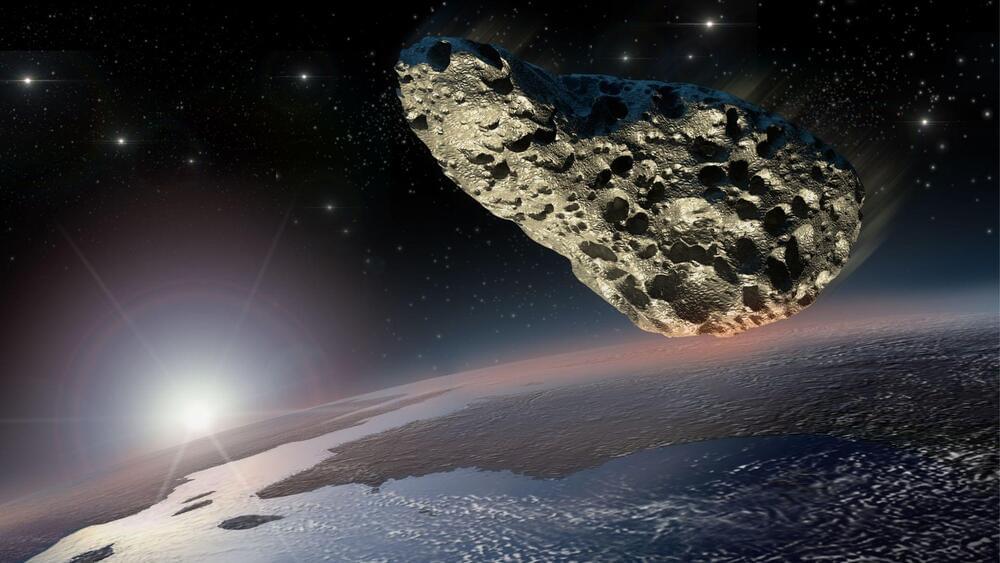New research suggests that the asteroid responsible for forming Earth’s largest impact crater was even bigger than researchers had previously estimated.



The end of classical Computer Science is coming, and most of us are dinosaurs waiting for the meteor to hit.
I came of age in the 1980s, programming personal computers like the Commodore VIC-20 and Apple ][e at home. Going on to study Computer Science in college and ultimately getting a PhD at Berkeley, the bulk of my professional training was rooted in what I will call “classical” CS: programming, algorithms, data structures, systems, programming languages. In Classical Computer Science, the ultimate goal is to reduce an idea to a program written by a human — source code in a language like Java or C++ or Python. Every idea in Classical CS — no matter how complex or sophisticated — from a database join algorithm to the mind-bogglingly obtuse Paxos consensus protocol — can be expressed as a human-readable, human-comprehendible program.
When I was in college in the early ’90s, we were still in the depth of the AI Winter, and AI as a field was likewise dominated by classical algorithms. My first research job at Cornell was working with Dan Huttenlocher, a leader in the field of computer vision (and now Dean of the MIT School of Computing). In Dan’s PhD-level computer vision course in 1995 or so, we never once discussed anything resembling deep learning or neural networks—it was all classical algorithms like Canny edge detection, optical flow, and Hausdorff distances. Deep learning was in its infancy, not yet considered mainstream AI, let alone mainstream CS.

Last night at 23:14 UTC, NASA’s DART spacecraft successfully struck asteroid Dimorphos, the 160-metre moonlet orbiting around the larger Didymos asteroid. About 38 seconds later, the time it took for the light to arrive at Earth, people all over the world saw the abrupt end of the live stream from the spacecraft, signalling that the impact had happened successfully – DART was no more.
Astronomers on a small slice of our planet’s surface, extending from southern and eastern Africa to the Indian Ocean and the Arabian Peninsula, could actually watch it live with their telescopes. Among those were a half dozen stations joined together for a dedicated observing campaign organised by ESA’s Planetary Defence Office and coordinated by the team of observers of the Agency’s Near-Earth Object Coordination Centre (NEOCC). As usual, when such a timely astronomical event happens, not all stations were successful in their observations: clouds, technical problems and other issues always affect real-life observations.
However, a few of ESA’s collaborating stations could immediately report a successful direct confirmation of DART’s impact. Among them was the team of the Les Makes observatory, on the French island of La Reunion in the Indian Ocean. The sequence of images they provided in real time was impressive: the asteroid immediately started brightening upon impact, and within a few seconds it was already noticeably brighter. Within less than a minute a cloud of ejected material became visible and could be followed while it drifted eastwards and slowly dissipated.

Bet the dinosaurs wish they’d thought of this.
NASA on Monday will attempt a feat humanity has never before accomplished: deliberately smacking a spacecraft into an asteroid to slightly deflect its orbit, in a key test of our ability to stop cosmic objects from devastating life on Earth.
The Double Asteroid Redirection Test (DART) spaceship launched from California last November and is fast approaching its target, which it will strike at roughly 14,000 miles per hour (23,000 kph).
For Physics & Chemistry experiments for kids delivered to your door head to https://melscience.com/sBIs/ and use promo code DRBECKY50 for 50% off the first month of any subscription (valid until 22nd October 2022).
To find out whether you can see the partial solar eclipse on 25th October 2022 put in your location here: https://www.timeanddate.com/eclipse/map/2022-october-25
To watch the next launch attempt for Artemis live at 6pm EST on Tuesday 27th September head to @NASA ‘s YouTube channel here: https://www.youtube.com/watch?v=CMLD0Lp0JBg.
To watch the DART mission impact live on Monday 26th September 2022 head to @NASA ‘s YouTube channel here: https://www.youtube.com/watch?v=4RA8Tfa6Sck.
My previous video on the DART mission: https://youtu.be/ZBhTtaTGhao.
My previous video on whether aliens exist (inc. Drake equation): https://www.youtube.com/watch?v=fihVzPl7Dys.
My previous Night Sky News debunking these JWST Big Bang Theory claims: https://www.youtube.com/watch?v=Fqfap3v0xxw.
My previous video chatting with Dr. Libby Jones about being in control of JWST: https://www.youtube.com/watch?v=UPO8pw8r7ak.
My previous video on the discovery of the star Earendel: https://www.youtube.com/watch?v=VChgsXbIgdw.
Welch et al. (2022; Earendel imaged with JWST — not peer reviewed) — https://arxiv.org/pdf/2208.09007.pdf.
Welch et al. (2022; Earendel discovered with HST — behind pay wall) — https://www.nature.com/articles/s41586-022-04449-y.
Carter et al. (2022; JWST direct image exoplanet HIP 65426b — not peer reviewed) — https://arxiv.org/pdf/2208.14990.pdf.
El Baldry et al. (2022; a black hole orbiting a Sun-like star — not peer reviewed) — https://arxiv.org/pdf/2209.06833.pdf.
PDRs4ALL project (that imaged the Orion nebula with JWST) — https://pdrs4all.org/
00:00 — Introduction.
00:40 — Fireball meteor across Ireland & Scotland.
01:35 — Draconids & Orionids Meteor Shower.
03:05 — Mars, Jupiter & Saturn visible right now.
03:39 — Jupiter at Opposition 26th September.
04:27 — Partial Solar Eclipse 25th October 2022
06:13 — Artemis launch rescheduled.
07:08 — DART mission asteroid impact imminent.
07:48 — RIP Frank Drake 1930–2022
08:25 — JWST misinformation AGAIN
09:39 — JWST confirms Earendel is a star (or binary star system)
13:31 — JWST’s first direct image of an exoplanet HIP 65426b explained.
17:07 — JWST observes Orion nebula.
19:39 — New candidate for closest black hole (its orbiting a Sun-like star too!)
23:59 — Outro.
24:26 — MEL science.
26:17 — Bloopers.
📚 My new book, “A Brief History of Black Holes”, out NOW in hardback, e-book and audiobook (which I narrated myself!) Note, USA & Canada hardback out 1st November 2022: http://hyperurl.co/DrBecky.

In a first-of-its-kind test for planetary defense, NASA’s DART spacecraft is scheduled next week to crash into an asteroid and alter the celestial body’s course.
If all goes according to plan, on September 26th at 7:14 pm Eastern Daylight Time, NASA’s DART spacecraft will meet a fiery end. DART, whose name stands for Double Asteroid Redirection Test, is poised to intentionally crash into an asteroid that, at the time of impact, will be 11 million km from Earth. The goal of the mission is to alter the speed and trajectory of the impacted space boulder. The technology developed for the mission could one day aid in shifting the orbit of an asteroid that—unlike this one—is on a collision course with Earth.
“Our DART spacecraft is going to impact an asteroid in humanity’s first attempt to change the motion of a natural celestial body,” said Tom Statler, a scientist in NASA’s planetary defense team, in a recent press conference about the mission. “It will be a truly historic moment for the entire world.”

Circa 2019 face_with_colon_three
By Tyler Benster.
Neuroscientists have a dizzying array of methods to listen in on hundreds or even thousands of neurons in the brain and have even developed tools to manipulate the activity of individual cells. Will this unprecedented access to the brain allow us to finally crack the mystery of how it works? In 2017, Jonas and Kording published a controversial research article, “Could a Neuroscientist Understand a Microprocessor?” that argues maybe not. To make their point, the authors turn to their “model organism” of choice: a MOS 6502 processor as popularized by the Apple I, Commodore 64, and Atari Video Game System. Jonas and Kording argue that for an electrical engineer, a satisfying description of the processor would break it into modules, like an adder or subtractor, and submodules, like the transistor, to form a hierarchy of information processing. They suggest that, while popular methods from neuroscience might reveal interesting structure in the activity of the brain, researchers often use techniques that would fail to reveal a hierarchy of information processing if applied to the (presumably much simpler) computer processor.
For example, neuroscientists have long used lesions, or turning off or destroying a part of the brain, to try to find links between that brain region and particular behaviors. In one particularly striking experiment, the authors mimicked this classic technique by simulating the processor as it performed one of four “behaviors”: Donkey Kong, Space Invaders, Pitfall, and Asteroids. They then systematically removed one transistor, and reported which (if any) of the behaviors could still be performed (i.e. did the game boot?) The elimination of 1,565 transistors have no impact, while 1,560 inhibit all behaviors, and indeed a subset of transistors make only one game impossible. Perhaps these are the Donkey Kong transistors, the authors coyly suggest, before concluding that the “causal relationship” is highly superficial.

The findings could revolutionize how we study potential collisions.
Asteroids pass by our planet all the time and even sometimes land here, causing much devastation. Understanding how often these kinds of impacts happened in the past and how they influenced the environment both then and today is crucial to protecting Earth.
Now, new research published by the Estonian Research Council on Friday has shown that analyzing bodies of organisms killed by an impact of asteroids can teach us how much damage occurs at the spot of such a cosmic collision.
Researchers dugout trenches in rims of four craters (Kaali Main and Kaali 2/8 in Estonia, Morasko in Poland, and Whitecourt in Canada) located on two different continents that formed thousands of years apart to analyze their content and draw conclusions about the effects of the collisions on our planet.
